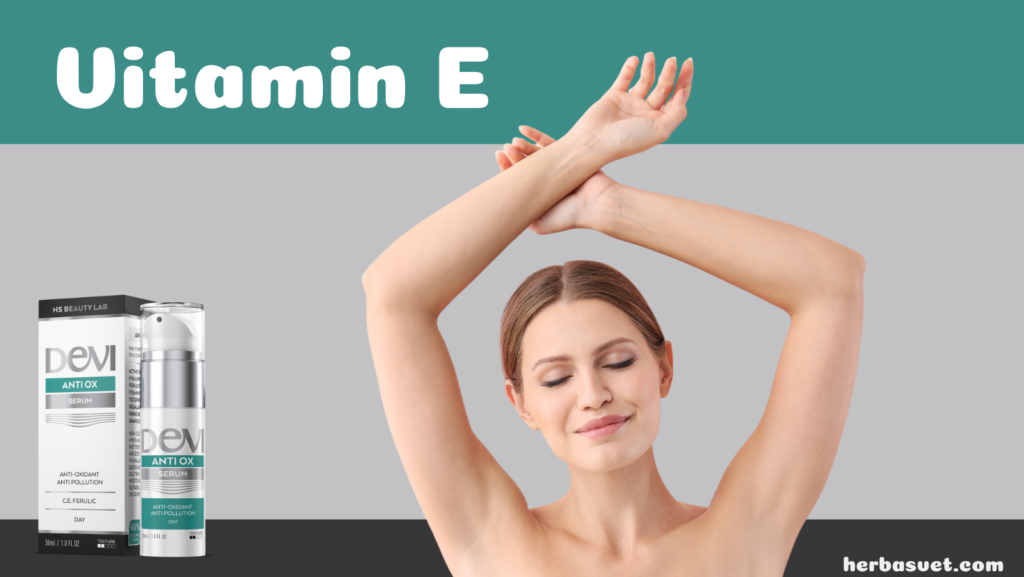When it was discovered in 1922, then isolated and synthesised in 1938, the first thing that was noticed during experiments on rats was that, without it, the fertilised egg could not develop properly and lead to the birth of a live cub. Its power to give life is also summed up in its scientific name – tocopherol: from the ancient Greek tokos – birth, and ferein – to carry, so when these two words are combined, the meaning is clear – to bring forth life. Vitamin E or tocopherol, therefore, is a vitamin without which there is no life. Further research has established numerous functions of this vitamin, probably the most significant being its antioxidant activity.
Tocopherols belong to the class of organic chemical compounds, specifically methylated phenols, of which there are eight, alpha-tocopherol being the most abundant. This vitamin, present in vegetable oils, is liposoluble (soluble in fat). When taken through food, the meal should contain fat so that the vitamin can be properly absorbed. As all vitamins in our body are interconnected, vitamin E contributes to better utilisation of vitamin A, protection of vitamin B complex and vitamin C from oxidation, better utilisation of vitamin K, which is important for bone health, and is necessary for a number of functions, including protection of the cardiovascular, nervous and muscular systems, extending the lifespan of red blood cells, protecting lipoproteins from oxidation, preserving the functions of the immune system and preventing the spread of malignant cells. Tocopherol is also valuable in the treatment of some rare and unusual conditions, such as yellow nail syndrome, which is manifested by lymphedema, accumulation of fluid in the pleura, stunted growth and yellowing and curling of the nails.
TOCOPHEROL IN FOOD
Vitamin E is most abundant in oilseeds and vegetable oils: wheat germ oil, sunflower oil, soybean oil and grape seed oil; in nuts – almonds, hazelnuts, peanuts, pumpkin seeds; in fish – especially salmon and trout; and other foods such as avocados, red peppers, green leafy vegetables… In normal circumstances, adults need about 15 milligrams of vitamin E per day, so if we eat some of the above-mentioned foods, our liver will store it and our body will use it when needed. People taking anticoagulants may have a deficiency of this vitamin, and its absorption may be hindered by drugs to reduce cholesterol levels.
By consuming food rich in vitamin E, we improve our body’s immune system. As tocopherol is a powerful antioxidant, its most important role is to protect cells from deterioration due to the harmful effects of free radicals, a process that contributes to aging, malignant and cardiovascular diseases.
However, tocopherol does not have to be ingested only through food – it can also be applied to the skin. Even then, this vitamin has an antioxidant effect, it strengthens the skin’s immunity and protects against inflammation, malignancy and aging, which is why it is widely used in dermatology and the cosmetic industry.

HOW DOES VITAMIN E PROTECT THE SKIN?
Numerous clinical studies dealing with the role of vitamin E in dermatology have proven that tocopherol protects the skin from a number of consequences of the harmful effects of solar radiation by actively destroying free radicals: it inhibits the production of PGE2 (prostaglandin E2) and nitric oxides, prevents lipid peroxidation and edema caused UVB rays, in other words – it protects the epidermis from oxidative stress. Its anti-tumour and photoprotective effect has been proven, which not only prevents the formation of melanoma, but also protects the skin from deterioration and aging caused by UV rays; it also prevents pigmentation, which has both a health and aesthetic effect. This effect is doubled in combination with vitamin C and ferulic acid; in fact, ferulic acid provides up to an eight-fold increase in the protective effect of these vitamins.
Exposure to UV rays is the main reason for photoaging of the skin, which manifests externally by the appearance of both deep and fine wrinkles, especially around the eyes and the mouth, sagging of the skin and the appearance of dark spots. The skin dries out, loses elasticity and ages rapidly. In addition to the protective effect in this case, tocopherol also acts protectively in more serious skin disorders: it has been proven that people with vitiligo, psoriasis, atopic dermatitis and acne have a lower level of vitamin E in the serum compared to people who do not have these disorders. The antioxidant and anti-inflammatory effect of vitamin E shows great potential both in the treatment of skin disorders and damage, as well as in skin rejuvenation. The reason for this is that oxidative stress and inflammation are some of the mechanisms involved in the pathogenesis of disorders such as, for example, atopic dermatitis.
When it comes to cosmetic preparations, the quality and the dosing of vitamin E in them is very important. Also, as vitamin E is quite unstable, i.e. sensitive when exposed to air and light, the packaging of the preparation itself is very important. For this very reason, exclusive Devi cosmetics come in state-of-the-art packaging protected from light, with a vacuum pump that does not allow air to enter the contents. Tocopherol is used in as many as 20 cosmetic preparations available from the Herba Svet laboratory. Its antioxidant effect is best expressed in the Anti-Ox serum, which also contains excellent ferulic acid that enhances the vitamin’s ability to protect the skin from the negative effect of free radicals. In addition to tocopherol and ferulic acid, this serum contains the top-quality hyaluronic acid, vitamin C in a stable form – squalane, as well as ginkgo biloba and grape seed extracts. The synergistic effect of these precious ingredients increases the skin’s immunity and its resistance to harmful agents from the environment and has a strong anti-aging effect – it affects the gradual reduction of wrinkles and the strengthening of the skin structure. The result is a brighter, cleaner and more even complexion, smooth and elastic skin.

